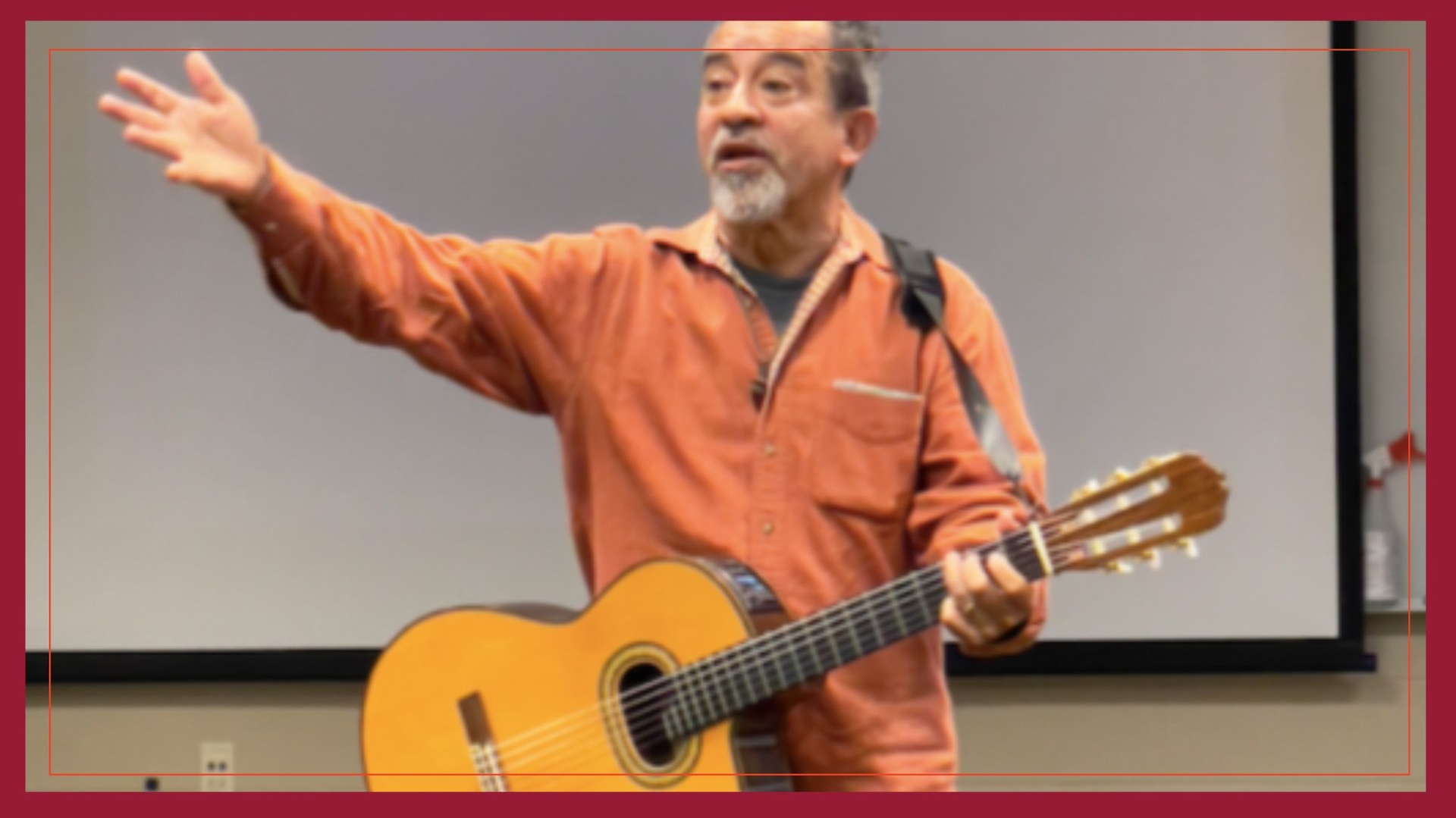
The Honors Program and Center for Principled Problem Solving and Excellence in Teaching recently held an open screening of the documentary La Manplesa: An Uprising Remembered, which examines the roots of the 1991 riots in Washington, D.C.'s, Mount Pleasant neighborhood. Invited guest speakers Lilo Gonzalez and Magee Mcilvaine, who took part in the making of the film, spoke to students and faculty who attended.
The documentary follows the police shooting of Daniel Gonzalez and how his death served as a catalyst for Latin American protests that took place on May 5, 1991. The film uses a rich variety of media, incorporating El Salvadoran music and poetry to accentuate its impact. Original pieces by musicians Pepe and Lilo Gonzalez and poets Sami Miranda and Quique Aviles play over footage of the protests and throughout the documentary.
Film editor Magee Mcilvaine told audience members that everyone who created the documentary livesd in Mount Pleasant. “The whole team is from D.C.,” he says. “I’m from D.C. but I’m the only person not from Manplesa, and so growing up I did not know about this even though I’m from a different quadrant of D.C. A lot of people don’t know this story.”
Magee says it was important to have first-hand accounts in the creation of the film. She said sharing their testimonies keeps the story alive.
The protests occurred when many Latin American immigrants were making their way to the United States from El Salvador due to civil war within the country. Those who escaped the violence worked to create tight-knit communities in Washington neighborhoods like Mount Pleasant.
But as the Latin American population grew, white movements began to feel threatened, according to the documentary. The film claims that new police officers were sent to the neighborhood, officers who were more aggressive and prejudiced and eager to to express their dominance.
Almost all of the Mount Pleasant residents interviewed confirm that they experienced some form of police brutality in the years leading up to the protests. Many of these residents were teenagers at the time. They describe the behavior as normal and constant, something they had to live with no matter how much they complied.
The narration of Daniel Gonzalez’s death is visualized through the animation of painting, with details changing as witnesses tell what they saw versus what the media saw and how it tried to change the narrative. With smaller details sharpening as the story goes on, the documentary illustrates the changing narrative with Daniel first portrayed as unarmed, then holding a knife or belt in the midst of resisting arrest, and finally in handcuffs when he was shot.
The image constantly changes with each variation of the story to show the spread of misinformation and rumors. To this day, many of the residents, people who had fled El Salvador to escape oppression and police violence only to be subjected to it again, still don’t know the truth.
Lilo Gonzalez recounted the police brutality he faced in the protests. “It was a violent way to start a conversation, but at least it got more resources for the essential programs that were working,” he says. He says the violence of the Mount Pleasant protests were tragic but eventually led to conversations that addressed “the problems that our leaders tried to push under the rug until the mess became too big to ignore.”
Despite the difference in notoriety of the two movements, the parallels between the George Floyd and Daniel Gonzalez protests are striking, parallels not lost on Mount Pleasant residents. Many residents said they couldn’t watch footage of the protests following George’s death because it reminded them of the fires, tear gas and chaos that once invaded their streets and homes.

